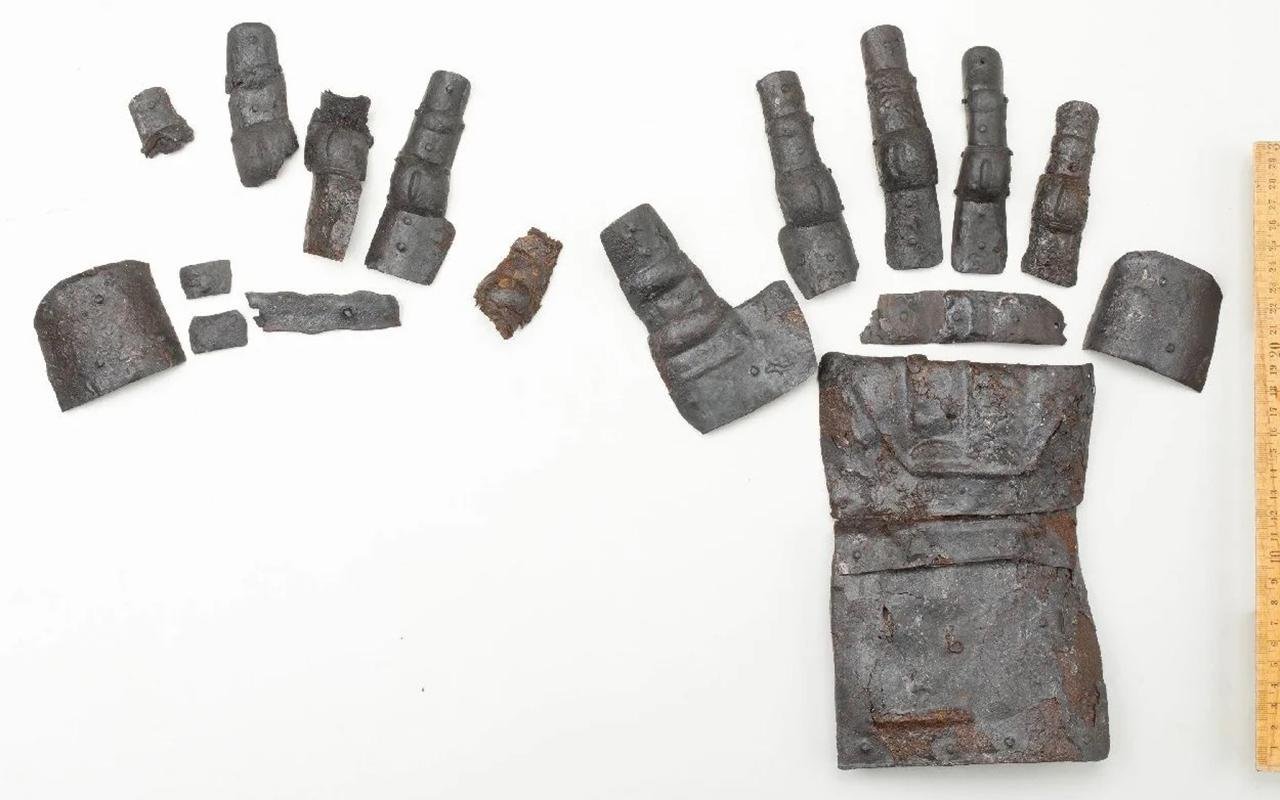A press conference by the Canton of Zurich has announced the discovery of an exceptionally well-preserved 14th-century gauntlet during archaeological excavations southeast of Kyburg Castle in Pfäffikon, Switzerland.
 Credit: Canton of Zurich
Credit: Canton of Zurich
The intact gauntlet, a four-fold finger glove worn on the right hand, was unveiled during excavations adjacent to Kyburg Castle, one of Switzerland’s expansive medieval castle complexes. The castle, formerly known as Chuigeburch, played a pivotal role in the medieval period and is now the focal point of this remarkable discovery.
The gauntlet, described as the best-preserved in its class ever found in Switzerland, consists of individual iron plates intricately stacked like scales. These plates are connected through side rivets, forming a flexible glove. The components were originally affixed to a leather or textile base, showcasing meticulous craftsmanship. Notably, the gauntlet’s state of preservation allows for the recognition of numerous manufacturing and decorative details, setting it apart from previously known examples.
The Zurich cantonal infrastructure department emphasized the rarity of such finds, stating that only five 14th-century gauntlets had been discovered in Switzerland to date, none of which matched the level of preservation and detail exhibited by the Kyburg gauntlet. Lorena Burkhardt, the project leader, highlighted the uniqueness of the Kyburg specimen, stating, “The discovery is sensational due to its age and condition.”
 Credit: Canton of Zurich
Credit: Canton of Zurich
Archaeological excavations in the area also unearthed a medieval weaving cellar destroyed by fire in the 14th century. A blacksmith’s presence was indicated by the discovery of a mold, along with over 50 well-preserved metal objects, including hammers, keys, projectile points, and the extraordinary gauntlet. The finding prompts questions about the scarcity of such artifacts and whether they were rare or intentionally melted down in the Middle Ages.
Despite the wealth of information provided by this discovery, unanswered questions linger, particularly regarding the original owner of the gauntlet. Burkhardt acknowledged that scientific work is in its early stages and aims to uncover more about the rarity of these objects in medieval times.
The Canton of Zurich plans to exhibit a copy of the gauntlet at Kyburg Castle’s permanent exhibition from March 29, 2024, accompanied by a reconstruction showcasing the complete armor set. The original gauntlet, a short-term highlight, will be accessible to visitors starting September 7, 2024, as part of the European Heritage Day, allowing enthusiasts and historians an opportunity to witness this medieval marvel.





